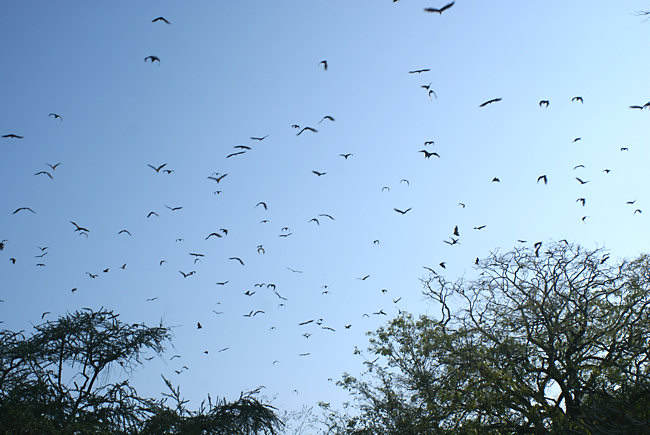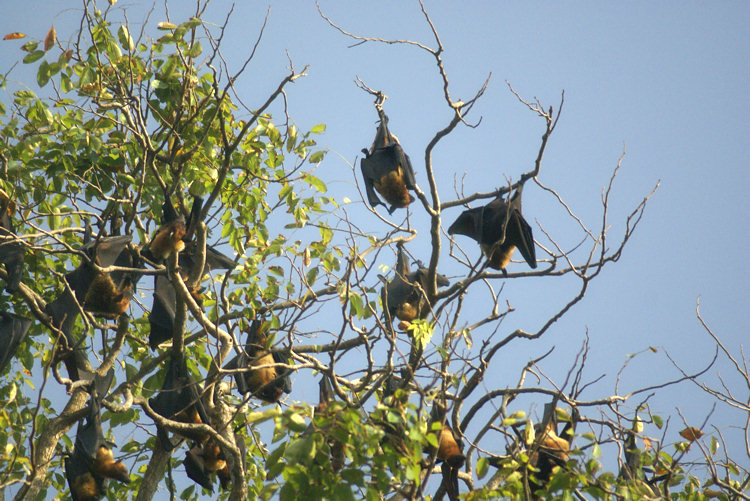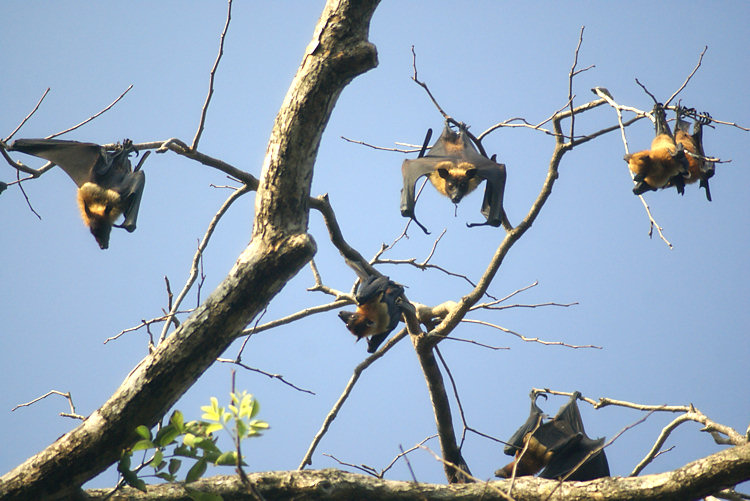Fruit Bats in Viharamahadevi (Victoria) Park in Colombo
Bats, Bats and more Bats. I did not expect this. None of the travel guides I had read before my visit to Sri Lanka mentioned the giant fruit bats that you could see flying above the Colombo skyline. The best place to view these monsters of the air is in Viharamahadevi Park which is positioned between the National Museum and the Colombo Town Hall.

Swarm of giant Fruit Bats in Viharamahadevi (Victoria) Park Colombo Sri Lanka
They use the tall trees to roost. I had seen banana trees with bags over the fruit in an earlier part of my trip. I know know why. It is to protect the cash crop from being nibbled.
Make sure you have your telephoto lens with you. Put the setting to a high shutter speed or to sports mode. This will stop your photos being blurred. If you have automatic focusing turn it off. Focus on the tree branch the bats you want to photograph are hanging from. If you keep the automatic focus on it will constantly zoom in and out trying to find the correct focus point as other bats fly in front of your lens.
These bats are known as Indian Flying Fox Bats. The Latin name is Pteropus Giganteus. They are defiantly gigantic. They have a wing span of up to 4-5 feet. That is huge and very scary if you do not like bats. I loved watching them. I had never seen bats flying in the day time before and not this big. It likes to live in the park as its natural home is in the forest. It normally feeds at night on fruit it finds on trees like mangoes and bananas. It also likes sweet nectar found in some tropical flowers and blossoms. They can be found in Sri Lanka, India, Pakistan, Bangladesh and Burma. It is also known as the Greater Indian Fruit Bat.

Roosting giant Indian Flying-Fox Fruit Bats in Viharamahadevi (Victoria) Park Colombo Sri Lanka
Although called flying-fox bats they do not have any biological connection to foxes. They only have that name because of the similarity in fur colour and facial features. Its body can be between 8 to 12 inches long. If you look at the end of its arms and legs you will see that it has prominent claws that it uses very effectively when hanging from tree branches and climbing on bark.
The bats are addicted to fruit juice. They chew fruit they find in trees and then spit out the pulp once they have sucked out all the fluid they can from that mouth full. Some very soft fruits they will swallow whole. A bat colony can contain from 100 to 6,000 bats, That is a lot of bat poo and wee. Don't stand under any of the trees occupied by roosting bats for obvious reasons.
A lot of the trees in the park seem to be stripped of foliage. This is because Flying Fox fruit bats can stay in the same place for many years at a time. They do not sleep quietly during the day. They are noisy and squabble with their neighbours. Their breeding season is between July and October. The baby bat will cling to its mother for about two months until it is full size and ready to fly on its own to find fruit to feed on. As a species it is doing very well and is not considered endangered.

Flying Fox Fruit Bats hanging from trees in Viharamahadevi (Victoria) Park Colombo Sri Lanka
Travel books

